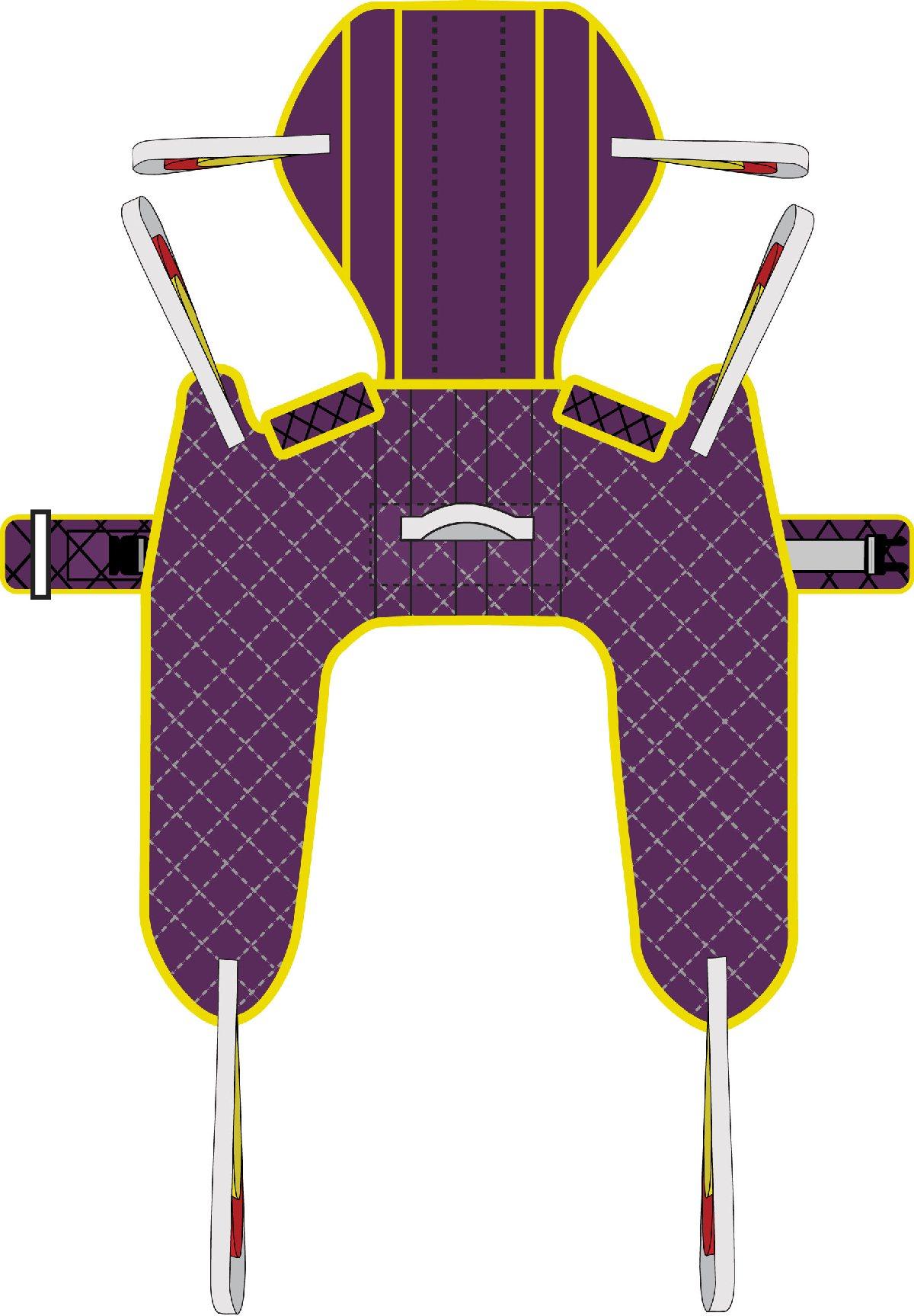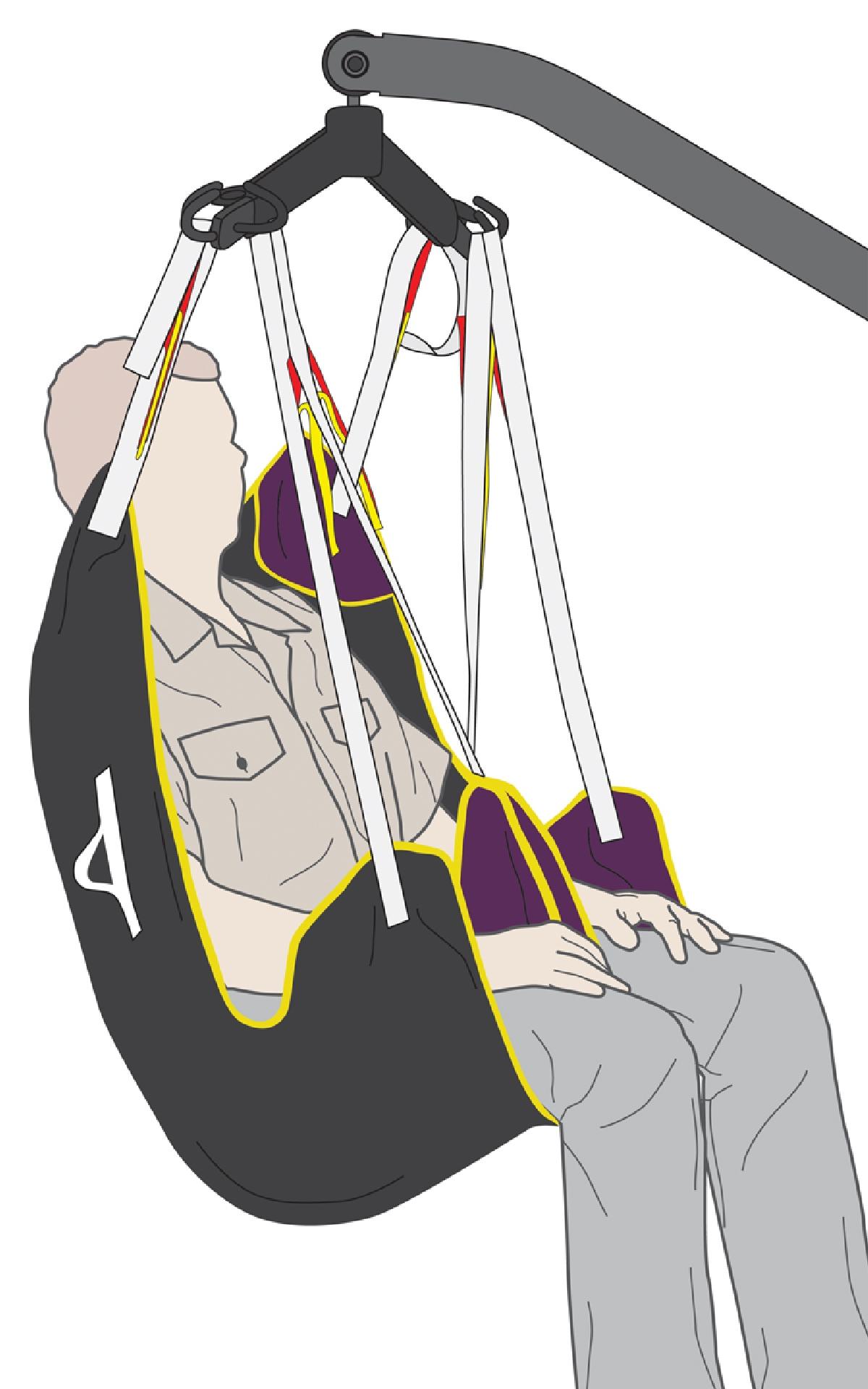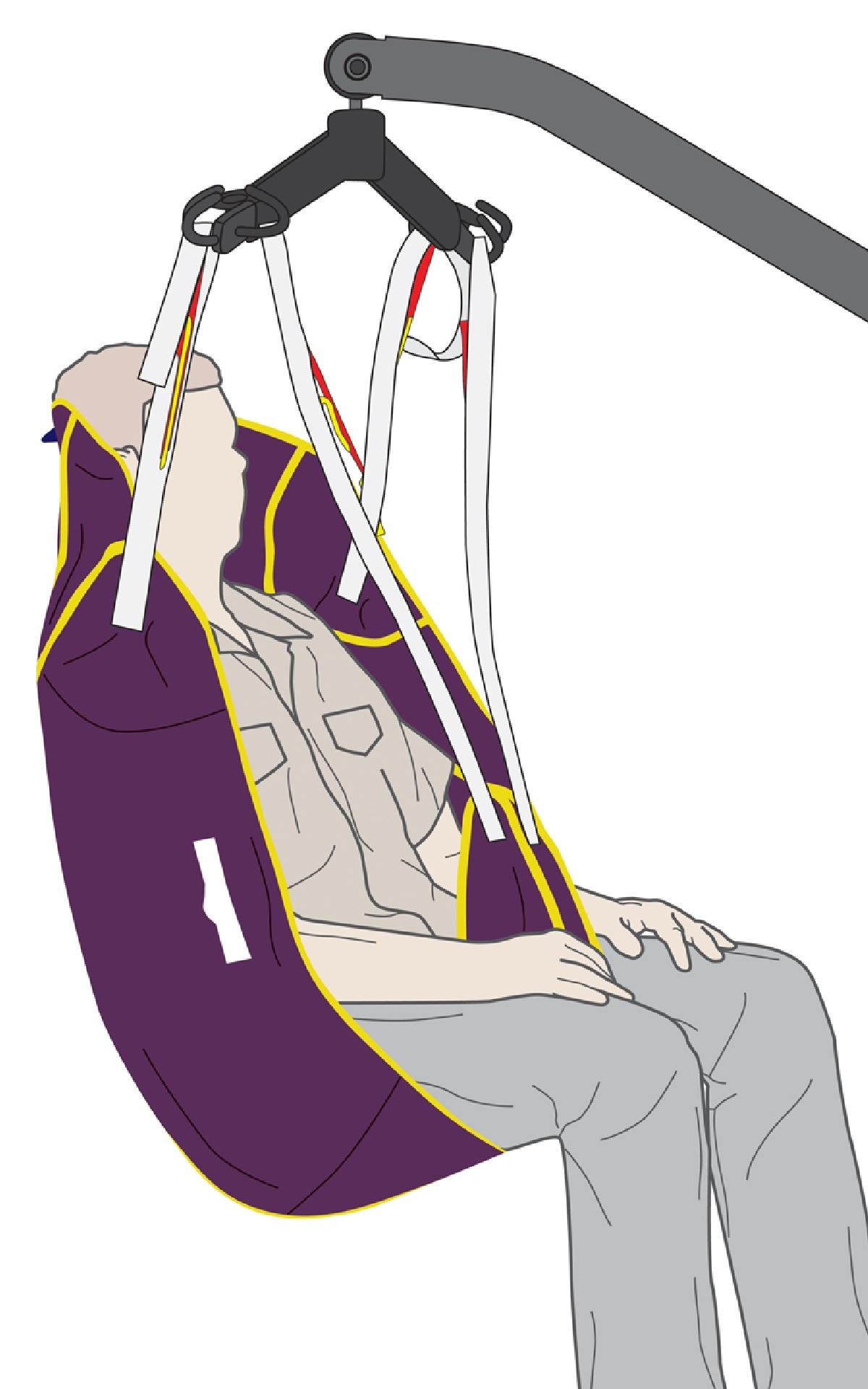For anyone with mobility issues, the right sling hoist can make a huge difference to the care they receive.
But not all sling hoists are created equal:
They come in all shapes and sizes for different purposes and situations — with different designs, materials, and levels of support.
So, if you’re working with someone who needs a sling hoist, you need the full details before you make a decision.
Here’s everything you need to know to make the best recommendation for your client:
What types of sling hoists are there?
There are five main hoist sling types:
- Transfer — the most common type of sling for everyday transfers.
- In-situ — a sling you can leave under the patient while they’re sitting.
- Bathing — a sling designed for wet conditions (often with a mesh fabric).
- Toileting — a sling that doesn’t get in the way of personal body parts.
- Standing — a sling designed to support a standing position.
The right sling for your client depends on the type of hoist you’re using. But it also depends on the needs of the user, and the purpose of the transfer.
For example:
A Transfer Sling Hoist is great for moving patients — but it may not be comfortable to sit on for long periods of time like an In-Situ Sling Hoist.
A Toileting Sling Hoist is the best way to visit the toilet and take care of personal hygiene. But it needs some stability and core strength — so it’s not an easy way to do everyday transfers.
What size sling do I need?
No matter what type of sling hoist you choose, you need to find the right fit for your client.
But it’s not just about comfort. It’s about safety:
If they’re not using the right size, they’re not being held securely — and they might end up slipping out of the sling during a transfer.
So how do you find the right fit?
Here’s a quick size guide for our sling hoists:
Sling hoist size guide:

Shoulder circumference is measured at chest level, around the outside of the arms.
Back height is measured from the base of the spine up to the nape of the neck.
You can also find our selector tool to help find your client the right sling for thier requirement - AltoSlings Hoists
Do you need a hoist sling you can leave under a patient?
Some people need frequent transfers throughout the day. And that can make it impractical to keep moving them in and out of the sling.
(It’s not just about time and effort. It’s about the strain and risk of injury that come with those movements — for both the carer and the user!)
Instead, some people prefer to use an In-situ hoist sling — one that lets you safely leave the sling under the patient while they sit.
So what’s the difference?
Instead of the standard polyester fabric, In-situ slings are made with our 3D Techmesh — a dual-layer material designed for longer periods of sitting.
With extra cushioning and built-in stretch, you can leave an In-situ hoist sling under a patient for longer — without creating pressure points that can cause pain and discomfort.
|
Which fabric is right for your sling?
|
Do you need a sling hoist for toileting?
Standard sling hoists work by supporting the user across the usual seat positions: the back, thighs, and buttocks.
But if you’re choosing a sling to help a client use the toilet (or to take care of personal hygiene), a standard sling won’t give them access to the lower parts of the body.
They’ll need a specially designed toileting sling for hoists — with a different design that supports the user in different places.
So how does it work?
Instead of supporting them in the usual seat positions, a toileting sling supports them under the thighs and around the waist.
This leaves an open space around the body parts that need access — so they can use a toilet normally without having to remove the sling.

For lots of people, a toileting sling is the simplest way to use a toilet from a sling without any obstructions or extra hassle.
But it’s not the easiest to sit in — which means it might not be right for everyone:
Because the main support comes from under the thighs and around the waist, a toileting sling needs a level of stability and core strength from the user to hold themselves in the right position.
So if you’re working with someone who has trouble supporting their body, they may be better off with a standard sling that gets removed once they’re on the toilet.
Do they need head support?
Some users will be comfortable with the seat support of a standard sling hoist.
But for others, they’ll need extra support to keep their head in position — especially if they’re using a sling hoist for bathing.
That’s why lots of the slings in our AltoSlings range come with alternate models that include head support — such as our Pro-Fit Sling or Agile-Fit Toileting Sling.
|
Without head support |
With head support |
What about bathing?
Most types of slings are designed for dry environments.
But in a shower or bath, drainage can be a problem — and a standard sling hoist won’t dry quickly once they’ve finished using it.
So for people who use slings for bathing or showering, you can choose a specially designed Bathing Sling for their hoist.
Instead of the standard polyester fabric, a bathing sling is made from a permeable polyester mesh.
This helps water to drain quickly out of the sling to avoid a build-up of water. But it also helps the sling to dry faster in between uses — so they can get it back into storage and ready for the next use.
Still not sure which is right for you?
We’ve got a huge range of sling hoists here at Wealden Rehab, with over 10 different designs and 7 sizes to choose from.
So if you’re feeling overwhelmed, don’t worry — we’re here to help.
You can answer a few step-by-step questions with the tool on our Hoist Slings page — or start a chat with one of our experts to help you find exactly what you need to make the best recommendation for your client.

Latest Blog Posts
Seasonal opening times 2025/26
2025 Holiday Season Update - Our team are here for you but we will be taking a break between the 24th December and 2nd January 2025.

New Shower Chair Innovation
Experience Wealden Rehab’s new shower chair innovation at the OT Show 2025

Responsive Care Equipment Supplier Across the UK
Supporting hospitals and care providers in unsettling times ...

NAEP Conference 2025
Meeting Occupational Therapists, Commissioners and Exploring Bariatric and Paediatric Solutions

Our Seasonal opening times 2024/25
Our team are here for you but we will be taking a break between the 24th December and 2nd January 2025.

Can a RAZ shower chair rust?
Get an in-depth look at the RAZ shower chair range and the protective features that make them built to last









